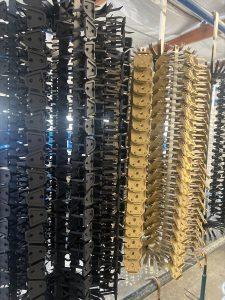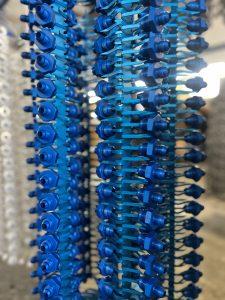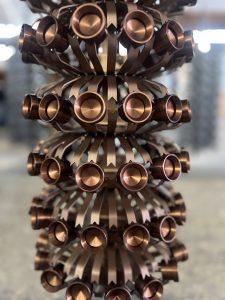 A brief overview of Type II anodizing
A brief overview of Type II anodizing
Sulfuric anodizing uses sulfuric acid (H2SO4) as the primary anodizing agent, converting the surface of an aluminum part into a corrosion- and wear-resistant layer. This aluminum anodizing method is called ‘Type II’ anodizing and has practical applications in various industries, as well as a high aesthetic value.
Although Type II anodizing offers mild abrasion resistance, sulfuric anodizing is more durable than Type I (chromic) anodizing. Typically, the coating is less than 1mm thick, which puts it between the ultra-thin Type I chromium anodizing and the more heavy-duty Type III hard-coat anodizing methods. As with most anodizing procedures, corrosion resistance is greatly enhanced with the Type II method.
 The benefits of sulfuric anodizing
The benefits of sulfuric anodizing
Some anodizing methods, like Type I, can require assistance adhering to subsequent paint applications, especially with various colors. On the other hand, Type III (hard-coat anodizing) may be more than is necessary for a given application and corrosion-/wear-resistance requirement. Sulfuric anodizing sits in the middle regarding anodizing layer thickness and wear resistance.
A feature that makes Type II anodizing unique is that it is very amenable to dyeing after the sulfuric anodizing treatment. Along with the “middle-of-the-road” performance (and correspondingly friendly price), its dye-friendly nature makes Type II a classic go-to for numerous clients.
 Why choose Reid for your anodizing needs?
Why choose Reid for your anodizing needs?
Reid Metal Finishing is experienced with anodizing technology, including the pitfalls of anodizing methods. We strive to clean all parts of any impurities that may leave streaks or pits in the sulfuric anodizing treatment. Other variables, like alloy composition differences, conductive rod placement/fixture, and the sulfuric acid solution used for anodizing, are verified for quality to give our customers consistent, reliable, robust results.
Sulfuric anodizing stands out in combining low cost, corrosion resistance, and friendliness to dyeing, giving bright colors a better opportunity to shine with Type II anodizing than with Types I and III. And, as with all our work here at Reid Metal Finishing, you’re left with superior parts that can be counted on for much longer than would be the case without any anodizing treatments.
Contact Reid Metal Finishing
Don’t hesitate to ask us about our services.
